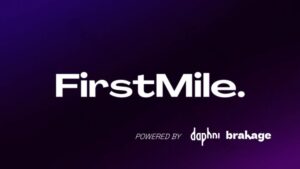Exits part 3: How To Make Things Work With Your Acquirer
Last but not least on the series covering exits: how to make things work with your acquirer. Of course, selling your company is a huge step, but most of the time the acquirer asks the founders to stay to make the transition works. Founders have very different experiences about this part, and this is the topic I discussed with the same dream team:
- Patrice Thiry is the founder of ProwebCE that has been sold to EdenRed. In the course of his 20 years adventure, Patrice went through IPO, public to private process, VC fundraising, the acquisition of 13 companies, a private equity LBO, and finally an exit. Patrice is now Business angels in more than 20 start-ups.
- Ronan le Moal just left his role as CEO at Credit Mutuel Arkea and led the acquisition or the integration of companies such as Fortuneo, Leetchi, Bankin, or more recently Budget Insights. Ronan is now an entrepreneur and board member at Memo bank.
- Aurélien de Meaux has created Cheerz after leaving school. He has raised €6m with VCs before being bought by Cewe in February 2018 which took 80% of the company for €36m. Aurélien is still leading the company.
- Thibaut Revel is Managing Partner at Clipperton Finance, one of the main investment banks in Paris which operates both in tech VC rounds and tech exits. He spent the last 10 years advising some of the most interesting projects in Europe.
Should You Be Transparent On The Process With Your Team?
While I strongly believe that transparency inside teams is a key factor for startups to succeed, the acquisition process seems to be another story.
Well, the answer is quite familiar: Timing is key. Thibaut insists on the strong level of expectation an acquisition process creates for a team and the fears it could generate. Indeed, the processes are extremely uncertain and his advice is actually to wait for you to have good visibility on the accomplishment to share it. However, the buyer often asks to meet some key people of the company during the process, and they should obviously be aware of it.
Then, a substantial part of the potential buyers are public companies, in this case, you actually need to limit the number of people in the confidence. It was the case for Aurélien with Cewe for instance.
What Is The Right Way to Make It Work?
Among my short experience in VC, I met many entrepreneurs and had feedback about people being really depressed after selling their companies. For the acquirer who wants to keep the founder involved, it is key to conserve the main drivers of a founder:
- Some freedom of action: The main challenge for the buyer is to find the right way to keep the right level of liberty for the founders. According to Patrice, a part of the answer is the role you let to the founder. When a startup buys a startup, it is far easier to make it work since you can let the founders an important level of freedom to so they can thrive.
- Some agility to execute the mission: When the company is growing fast you need to offer it time before integrating it. (see below)
- Some financial incentives: While the level of future incentives obviously decreases after an acquisition, according to Ronan, a good way to proceed is to let the founders own a part of the company. On the other side of the transaction and even if the financial mechanisms are a bit different, Patrice has the same feeling and experienced it successfully since he gradually sold the company after his LBO.
However, entrepreneurs also have a role to play. As an entrepreneur, you need to accept that you are not in your company anymore, and you need to keep in mind that there are larger topics that you need to take into account. You also need to make your part of the job to make the synergies work.
Synergies: a Game of Seduction
According to Ronan, you have 2 kinds of synergies that require to be activated with very different timing:
- Financial synergies: the buying power of a large bank allows to drastically reduce some costs in the acquired companies.
- Business synergies: how to leverage the relationships to make the acquiree grow faster than what would have happened otherwise.

Financial Synergies
When you buy a startup, leveraging financial synergies too early is definitely a mistake. Ronan considers that these synergies are actually quite easy to anticipate, but the point is not to activate it too early (which is a temptation when you acquire a startup that has not reached profitability yet and harm your EBITDA). For instance, while they acquired the company that ultimately became Fortuneo, Ronan gave the founders a lot of time before leveraging the financial synergies in terms of marketing, back-office capabilities, or server capabilities. The company was growing so fast and it was critical to preserve the great dynamic.
The main issue is when employees don’t understand why these young people are joining the company for such an important cost.
Business Synergies
While money is definitely an incentive (seriously?), business synergies are one of the most exciting parts of the acquisition for the acquired company. After many years of financial constraint, you can leverage the selling power/customer base/existing infrastructure of a company with huge financial power. All our protagonists have the same answer: Don’t be naive, it is not because you have a lot of opportunities that it will happen. Yes, you need to earn it.
Leveraging the business synergies is at stake at different levels which are all critical. First, the role of the acquiring company is to promote the new organization internally. According to Ronan, the main issue is when employees don’t understand why these young people are joining the company for such an important cost. You need to explain why you decided to allocate resources to buy this company. The message should be something like: “We have one ambition which is to go in this direction, and this team will help us to make it happen”. This is the only way to onboard people who have no direct interests in this acquisition in the short term but who could be critical for success in the long term. For Ronan, it was the case for agency directors for instance.
Then, entrepreneurs also have their role to play to make it happen. According to Patrice, it is not because you have sold your company that you don’t need to sell anymore. You need to seduce and convince all your potential partners internally and to accept that things will take time. For Aurélien, you also need to show respect for the institution and accept that companies that have lived more decades have a different pace and adapt to their methods and corporate processes…
On top of these synergies, a very good way to kill the innovation into a startup is to apply the same rules that you apply for a company with decades of history and thousands of employees. Startup agility is one of its main strengths and both the buyer and the entrepreneurs don’t want to kill it. However, when you are part of such a company, you still need to adapt your rules (on the regulatory side for instance) since the risks and the constraints of a huge group are different.
For Ronan, the good way to organize the transition is to have a clear corpus of rules that are common to all the companies that you buy. It allows the organization to find the right balance between chaos and huge processes that destroy the necessary agility.
How to incentivize entrepreneurs?

While many acquirers want the founders to stay into the company for a few years to integrate it and make it grow, the question of entrepreneurs’ incentive is a very tricky one:
- On the one hand, after the acquisition, entrepreneurs don’t have full control of the company anymore (they actually have very poor visibility on their future freedom of action and constraint when they sign the contract) and it would be unfair to put the whole amount on this part.
- On the other hand, entrepreneurs’ role is critical to the transition and you definitely need to keep them incentivized at least to make the transition happen. The earn-out is a financial mechanism to offer a part of the price regarding some criteria during a period after the transaction.
According to the Galion’s data, 75% of the deal includes an earn-out with a median duration period of 3 years in France. It looks very high when you think about Alex Lebrun’s sentence: “consider that the price of the transaction is the amount you get in the first 12 months”. According to the same source, in France, the totality of the earnout has been paid only in 40% of the case on their sample.

Can I be screwed?
Of course, you can be screwed basically at all the steps of the process. You have so many unknown parts:
- Will the management of the acquirer change and have different behavior?
- Can I really leverage the synergies?
- Will I have the budget to develop the company?
- Can I convince the key people internally to stay?
- Will I be involved in heavy corporate processes for every decision?
Patrice also mentioned the 800 pages contracts that he signed with EdenRed confessing that he has never read the contract entirely (not a good tip!). On top of that, the person leading the investment on EdenRed part announced him that he was leaving the company 3 weeks before the closing (which still happened!). At the end of the day, selling your company is a huge jump into the unknown. As always, it is a business of people and the entrepreneurial instinct is one more time your main asset.
If you liked it, this article is the third of a series, so you can check:
- this article which gives some learning from the exits of the most successful French entrepreneurs (Marc Simoncini, Alexandre Lebrun, and Bruno Maisonnier)
- this article about the best buyers for your startup and how to approach it.




 Now more than ever, it’s time to invest in Europe’s
Now more than ever, it’s time to invest in Europe’s